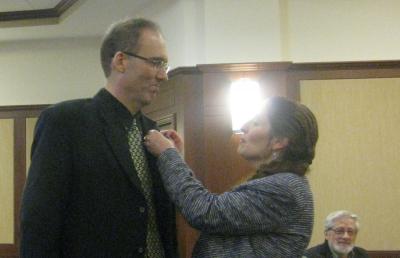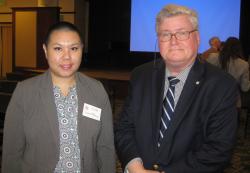Meeting Minutes 1455 January 18, 2017
Connecticut Academy of Arts and Sciences
Whitney Center, Hamden, CT
Minutes of CAAS Meeting 1455: Elliott Horch, Professor of Physics, Southern Connecticut State University (SCSU) on the topic: “Is There Another Earth Out There?”

Professor Pettigrew introduced new CAAS members from SCSU:
• Corinne E. Blackmer, Ph.D. Associate Professor of English and Judaic Studies
• Christine Caragianis Broadbridge, Ph.D. Dean, School of Graduate Studies, Research, and Innovation (GSRI)
• Matthew Enjalran, Ph.D. Chairperson and Professor of Physics
• Sean Patrick Grace, Ph.D. Chairperson and Associate Professor of Biology
• Jonathan L. Wharton, Ph.D. Assistant Professor of Political Science & Urban Affairs
• Joe Bertolino, M.S.W., Ed.D. President

Professor Pettigrew introduced the speaker for the day, Professor Elliott Horch, as an outstanding scholar and speaker, while Pettigrew pointed out the telescope in the CASS logo.
Prof. Horch began by discussing the Kepler satellite mission, which has revolutionized our understanding of the formation and evolution of exoplanets, that is, planets that orbit stars other than the Sun. Data from Kepler indicates that these objects are relatively common. Recently, Kepler has been repurposed and is now looking at some nearby stars, our nearest neighbors that might harbor planets that are analogues of the Earth – small, rocky worlds that could support life. However, Kepler does not take images of the planets it discovers, but rather it infers their presence from changes in the light received from the host star as the planet passes in front of it (the method of transits).
He discussed the habitable zone containing about 50 planets. What is true of the habitable zone? Dim stars are closer in. He illustrated 3 stars with differing brightness. Brightness is probably related to the odds of a planet containing water.

Prof. Horch ended by describing a large prototype stellar interferometer that is being built at SCSU with the support of a grant from the National Science Foundation. A lively and enthusiastic discussion followed including the possibly of life with a different biology, how estimates are obtained. Thanks to Keppler, we have much better estimates, still with some uncertainty.
Professor Pettigrew invited members to visit the science building at Southern as he thanked Professor Horch for his lucid presentation. Dinner was served to approximately 60 members.
Minutes and Photos by Monica Aspianto